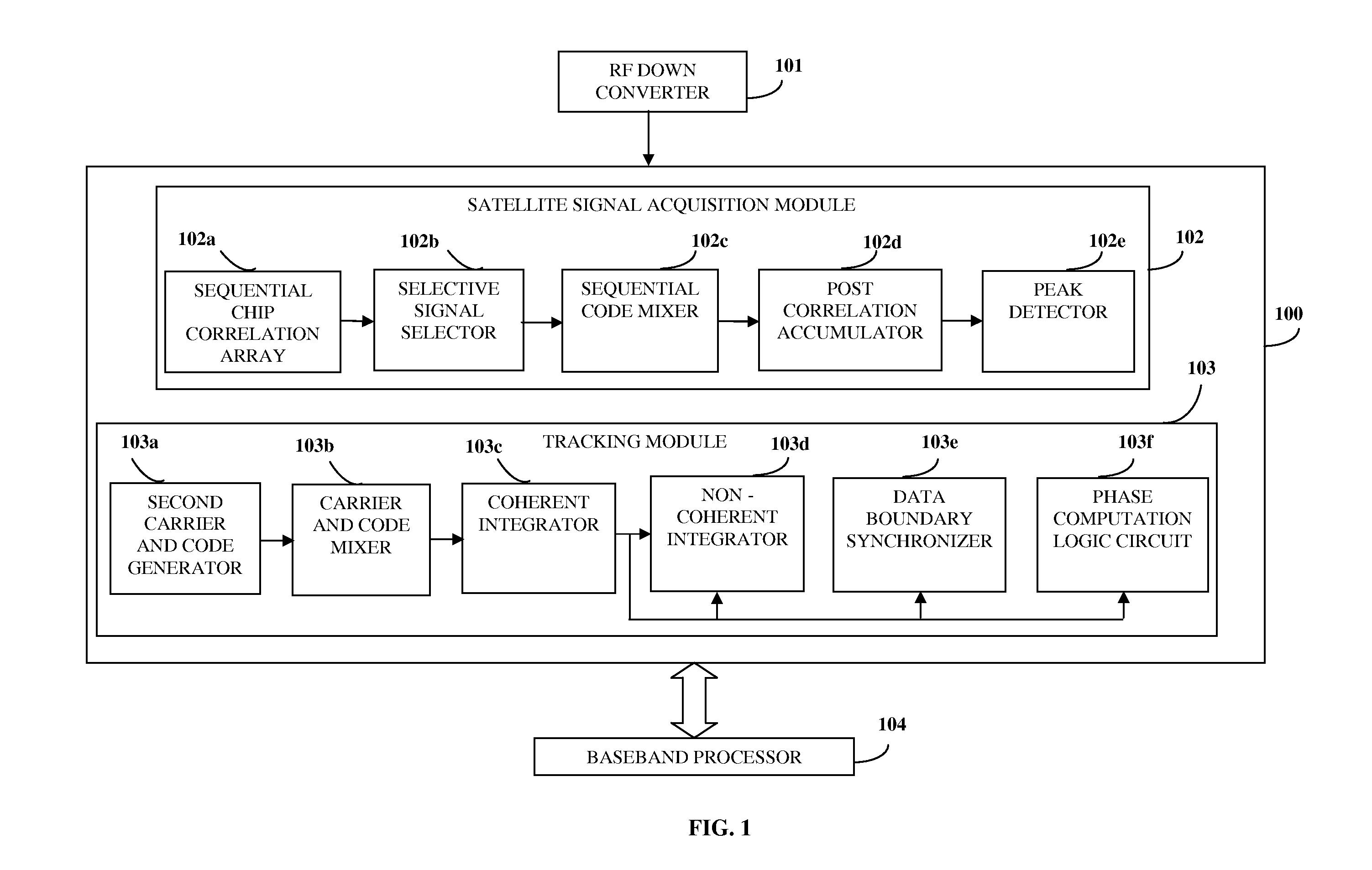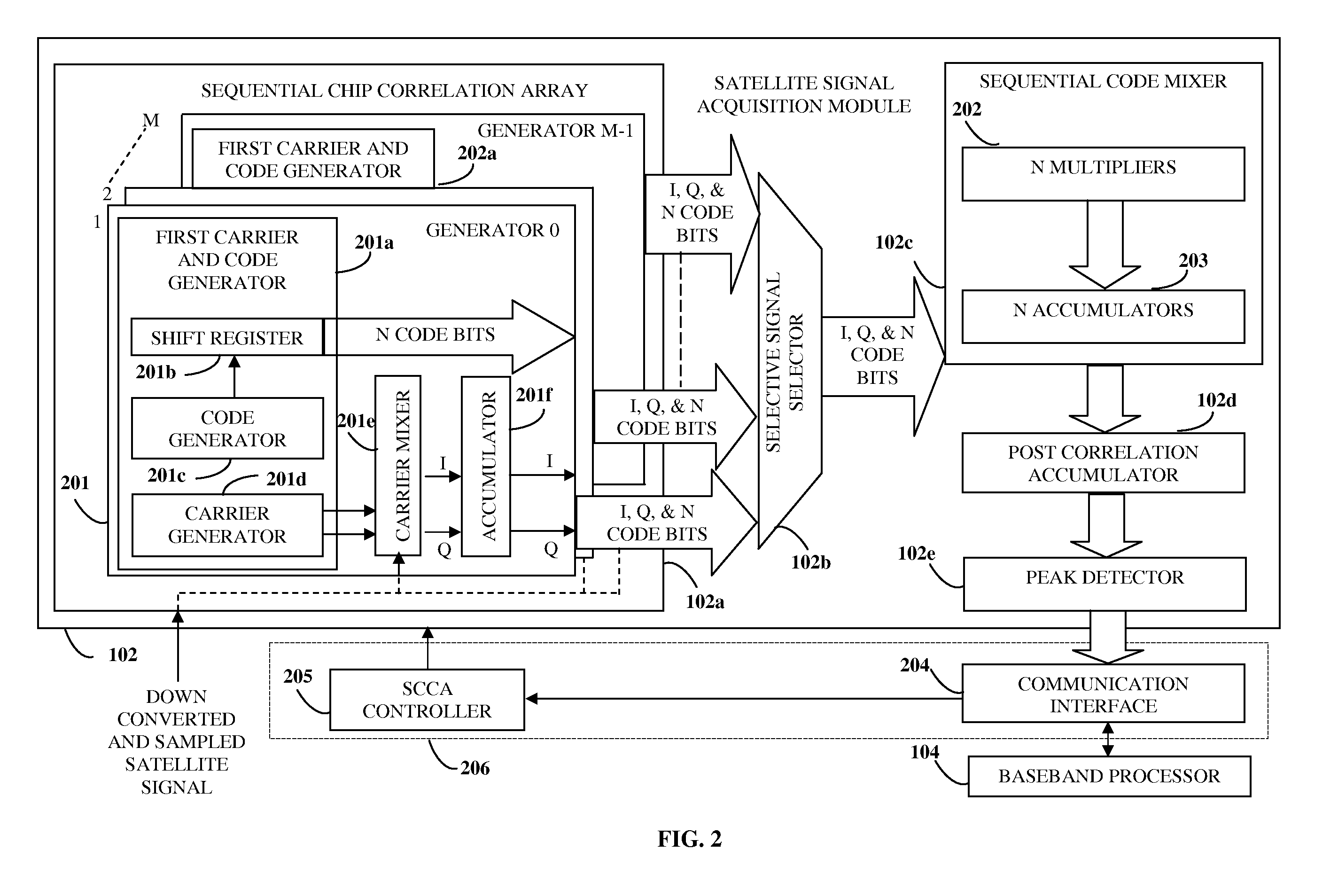Sequential Chip Correlation Array
a correlation array and chip technology, applied in the field of sequential chip correlation arrays, can solve the problems of increasing the size of the correlator device, posing a great challenge for hand-held gnss applications, and emergency dispatchers may experience difficulty in routing 911 calls to the appropriate center
- Summary
- Abstract
- Description
- Claims
- Application Information
AI Technical Summary
Benefits of technology
Problems solved by technology
Method used
Image
Examples
Embodiment Construction
[0024]FIG. 1 illustrates a global navigation satellite system (GNSS) baseband chip 100 for acquiring a global navigation satellite system. A global navigation satellite system is, for example, a global positioning system (GPS) signal comprising ranging signals, used to measure the distance to the satellite, and navigation messages. The navigation messages include data used to calculate the position of the satellite in orbit, and information about time and status of the entire satellite constellation. It should be evident; however, that global navigation satellite system is, for example, associated with other satellite positioning systems, such as the Russian “Glonass” system and the European “Galileo” system. Each GNSS satellite broadcasts a global navigation satellite signal having message data and signal structure that is unique to that satellite, thereby enabling a GNSS receiver to distinguish the global navigation satellite signal from one GNSS satellite to another GNSS satellit...
PUM
 Login to View More
Login to View More Abstract
Description
Claims
Application Information
 Login to View More
Login to View More - R&D
- Intellectual Property
- Life Sciences
- Materials
- Tech Scout
- Unparalleled Data Quality
- Higher Quality Content
- 60% Fewer Hallucinations
Browse by: Latest US Patents, China's latest patents, Technical Efficacy Thesaurus, Application Domain, Technology Topic, Popular Technical Reports.
© 2025 PatSnap. All rights reserved.Legal|Privacy policy|Modern Slavery Act Transparency Statement|Sitemap|About US| Contact US: help@patsnap.com



